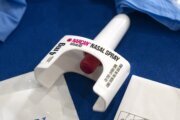In the relentless search for income-earning equity investments amid historically low bond yields in recent years, investors have been turning to dividend-focused funds.
By the end of January, the 469 U.S. listed dividend-focused open-end, closed-end and exchange-traded funds had $745 billion in assets, or 8.6 percent of all equity fund assets in the United States, according to a June report by Morningstar. In the decade through January, these funds recorded $86 billion in assets inflows.
“It isn’t hard to understand the appeal of dividend strategies,” the report says. “Couple historically low interest rates with increasing numbers of income-seeking retirees, and it’s no surprise that funds with dividend strategies have grown in popularity during the past decade.”
[See: 20 Awesome Dividend Stocks for Guaranteed Income.]
As a subset of these funds, dividend-focused ETFs allow investors to buy a fund that invests in a basket of different stocks that pay dividends instead of buying individual dividend stocks.
The two main strategies employed by these funds fall on a spectrum that on one end focuses on stocks with the highest dividends and on the other end focuses on funds that buy equities with the highest growth dividends.
In addition to low interest rates, such funds also may have gained in popularity because they contain a lot of companies that can be considered defensive equity plays, Alex Bryan, an analyst with Morningstar and author of the June report, says in an interview. And dividend-paying strategies over the last decade have done better than their peers in the value-oriented category, he says.
The prices of dividend stocks also historically have outperformed those of non-dividend stocks in rising interest rate environments, says Jay Batcha, chief investment officer at Optimal Capital. That’s because interest rates typically coincide with a better-performing economy, investors paring their bond holdings and perhaps rising inflation, he says.
Many market participants are expecting a Federal Reserve interest rate increase in December. The Fed’s last rate hike was in December 2015 and was the first rate increase in nearly a decade. The central bank had cut the federal funds rate to near zero in an attempt to spur the economy.
In the low-rate environment investors have taken more risk in the stock market, helping to push some dividend-yielding ETFs to historic premiums over the Standard & Poor’s 500 index, Batcha says.
Notably, that includes utility and telecom stocks, he says. Normally, these tend to be among the highest yielding dividend sectors, but they don’t offer much earnings growth, so they typically trade at a discount to the broader market, he says.
Their valuations have been pushed up as investors demand higher yielding stocks as interest rates are abnormally low, he says, adding that high yielding stocks are now the most overbought they have been since 1976.
[See: 6 Reliable Dividend Stocks Paying Out for 100 Years or More.]
However, consumer discretionary stocks, which have historically been among the best performers, have been underperforming this year, Batcha says.
Not all dividend ETFs are created equal, Batcha says. In addition to focusing on dividend growth or the highest yields, some have exposure to different sectors and are of different degrees of quality, he says.
Funds that focus on yield are often appealing for investors looking for income as the funds often overweigh stocks that have a lower valuation but pay higher dividends, Bryan says.
Those that focus on dividend growth — which invest in companies that have a history of raising dividends or have the capacity to do so in the future — tend to have a lower yield but also offer more focus on quality, Bryan says.
The companies held by these funds often have competitive advantages, strong profitability and tend to hold up better during market downturns, he says. Their dividend history shows the management team is committed to returning capital to investors, he says.
Historically, companies that grow their dividends faster than others typically outperform the market and offer lower risk, Batcha says.
“These dividend growers are where you want to focus your money these days,” Batcha says.
Batcha’s company has been investing in the Reality Shares DIVCON Leaders Dividend ETF (ticker: LEAD), which invests in large market-capitalized companies with what Reality Shares views as the highest probability of boosting their dividends within a year.
Also in the dividend growth ETF camp, Morningstar likes the Vanguard Dividend Appreciation ETF ( VIG), Bryan says. It invests in companies that have raised their regular annual dividend payments in each of the past 10 years. However, Bryan notes the fund won’t catch emerging dividend companies even though they may have good capacity to grow their payouts in the future.
Among the high-yield focused ETF dividend funds, Morningstar likes the Vanguard High Dividend Yield ETF ( VYM). It invests in a broad swath of stocks characterized by high dividend yields. That diversification is important because focusing on yield often means taking on more risk, he says.
[See: 7 Dividend Stocks That Pay More Each Year.]
Another top pick from Morningstar is the Schwab US Dividend Equity ETF ( SCHD), which Bryan characterizes as a hybrid of the yield- and growth-focused strategies. It filters dividend stocks for high return on equity, high dividend growth, high cash flow compared with debt and high dividend yield.
More from U.S. News
9 Blue-Chip Powerhouse ETFs to Buy
High-Tech Investing: 7 Sectors to Watch
7 Global Goats That Could Bring Market Mayhem
How to Invest in Dividend Funds originally appeared on usnews.com







